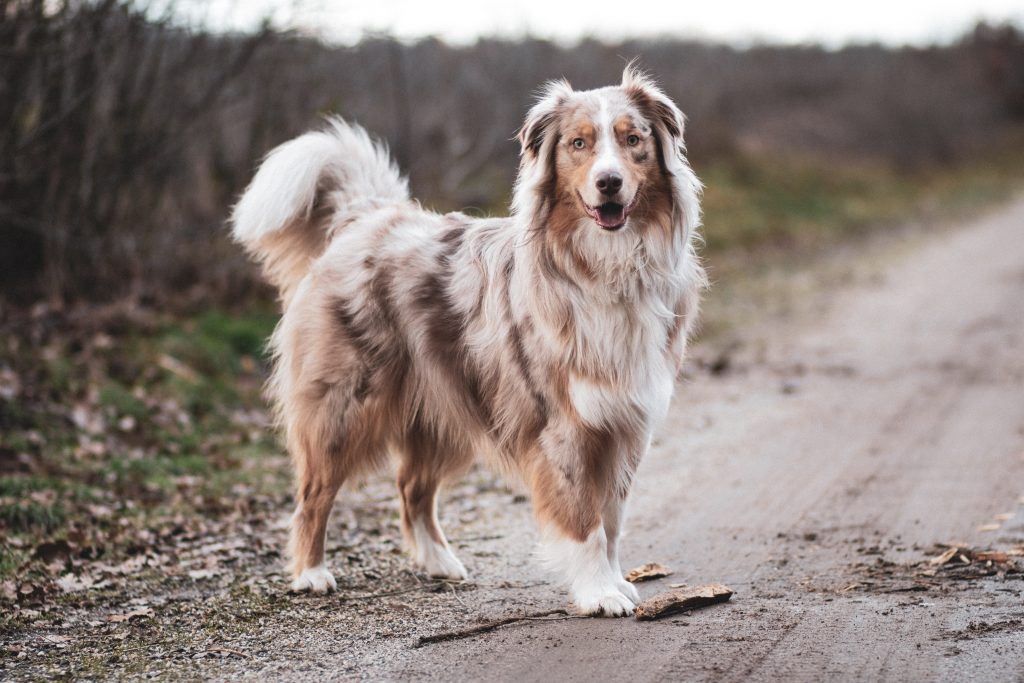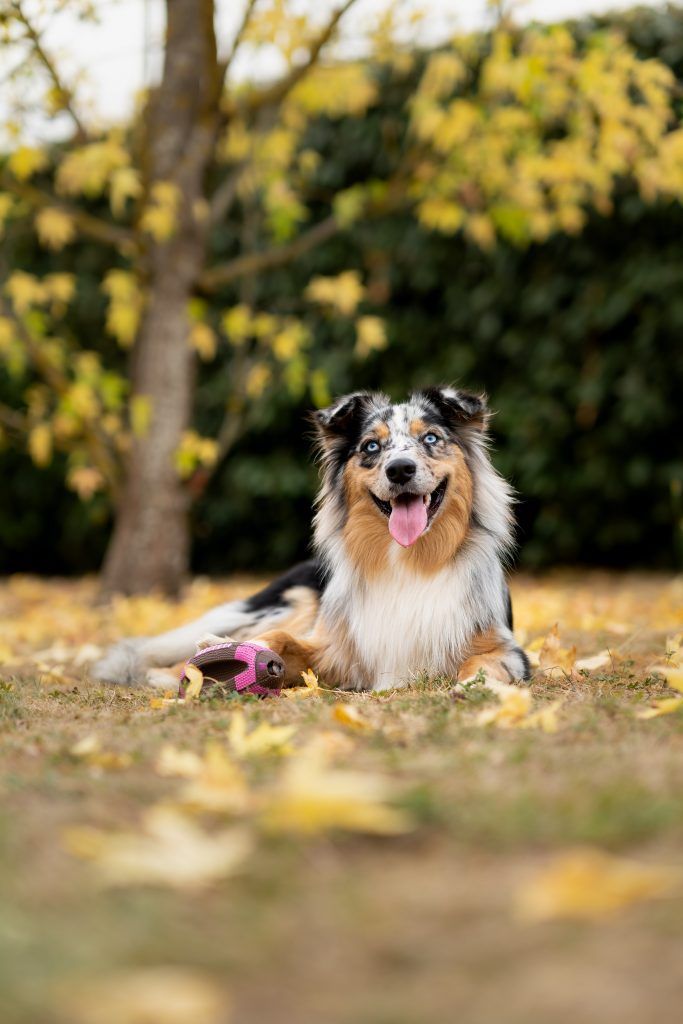The Australian Shepherd is a beloved breed that is known for its intelligence, energy, and loyalty. This breed has a long history and has been used for herding livestock for centuries. Today, the Australian Shepherd is a beloved family companion who loves to participate in activities like agility, frisbee, and herding. Their intelligence and desire to work make them wonderful partners for all kinds of activities, from helping out on the farm to playing in the backyard.
Origin of the Australian Shepherd Breed
The origin history of the Australian Shepherd is a bit of a mystery, but one thing is for certain: the breed is not from Australia! Despite the misleading name, the Australian Shepherd was actually developed in the western United States in the mid-19th century.
It is believed that the breed’s ancestors include collie and shepherd-type dogs imported from Australia during the 1840s, leading to their Australian name. The breed was developed to help ranchers and farmers with their livestock, and was prized for their working ability, intelligence, and versatility. The popularity of the breed skyrocketed in the post-World War II years, as they were known for their impressive athleticism when working alongside cowboys.
In 1993, the American Kennel Club finally recognized the Australian Shepherd as an official breed. Today, the Aussie is still as hardworking and intelligent as ever and is a beloved family companion. They are happiest when they have a job to do and can excel in dog sports or activities when their energy is properly directed.

Appearance
The Australian Shepherd has a medium-length, water-resistant coat that is perfect for protecting them from the elements. They come in several colors, including blue merle, red merle, red, tri-color, white, black, and tan. The coat has moderate feathering, or longer fringes of hair, on the back of the forelegs and on the upper part of their hind legs known as the britches. Females tend to have shorter and more streamlined coats than males, but males have a thicker, more profuse coat on their neck and chest.
Aussies also have short, smooth hair on their head and ears, and on the front of the forelegs and below the heels. The coat may be either straight or wavy, and merles tend to become darker with age. Although the Australian Shepherd does shed, regular brushing can help minimize shedding, reduce matting, and keep their coat looking shiny and healthy. To get the best results, use a slicker brush to stroke in the direction the hair grows and make sure to get all the way down to the skin. Additionally, use an undercoat rake to remove excess hair and a stripping comb to work through any mats around the ears.
Diet and Nutrition
Australian Shepherds are active and intelligent dogs that require a balanced diet and regular exercise to stay healthy and happy. Their diet should be tailored to meet their energy needs, which vary depending on their age and activity level. Puppies and young adults need a diet high in protein and fat, while older dogs may need to cut back on calories and fat as their metabolism slows down.
When it comes to nutrition, Australian Shepherds need a diet that is high in quality protein and low in carbohydrates and fats. Aim for food that is made from natural ingredients, such as fresh meats and vegetables, and avoid processed foods. Additionally, look for food that is enriched with vitamins, minerals, and fatty acids to ensure your pup is getting the proper nutrition.
In terms of portion size, it’s important to feed your Australian Shepherd according to their age, size, and activity level. Puppies and young adults should be fed 2-3 times per day, while adults and seniors should be fed 1-2 times per day. Additionally, make sure to always provide your pup with fresh water throughout the day.
Finally, make sure you are aware of any dietary restrictions or sensitivities your pup may have. If your pup has allergies, for example, you may need to switch to a specialized diet or seek out advice from a veterinary nutritionist. It’s also important to keep an eye on your pup’s weight and adjust their diet accordingly.
Overall, if you want your Australian Shepherd to live a long and healthy life, it’s important to give them the proper nutrition they need. A balanced diet, tailored to their individual needs, will go a long way.
Common Health Issues With Australian Shepherds
Australian Shepherds are intelligent and active dogs, and they require regular exercise, proper training, and good nutrition to stay healthy. Unfortunately, they are also predisposed to a range of health issues that can affect their quality of life. Common health issues affecting Australian Shepherds include hip and elbow dysplasia, eye diseases such as progressive retinal atrophy and cataracts, as well as allergies.
Hip and elbow dysplasia are two of the most common conditions that affect Australian Shepherds. This is a condition where the joint is malformed and can lead to pain, lameness, and arthritis. Regular check-ups and screening can help identify these issues early on and allow for proper treatment.
Eye diseases are also common in Australian Shepherds, with the most common being progressive retinal atrophy and cataracts. Progressive retinal atrophy is a condition which causes a gradual loss of vision and can ultimately lead to blindness. Cataracts are also common and can cause cloudy vision and blindness if left untreated.
Allergies are also common in Australian Shepherds and can be caused by foods, pollen, dust, and other environmental factors. These allergies can cause a range of symptoms such as skin irritation, sneezing, coughing, and difficulty breathing. If your dog is showing any of these symptoms, it is important to consult with a veterinarian to narrow down the cause and provide the best treatment.
Overall, Australian Shepherds are generally healthy and active dogs, but they are prone to certain health issues. It is important to be aware of these potential issues, and to ensure that your pet is receiving the best care possible. Regular check-ups, proper nutrition, and appropriate exercise can help keep your pet healthy and happy for years to come.
Interesting Facts About Australian Shepherds

Australian Shepherds are truly one-of-a-kind dogs. Here are some interesting facts about this breed that you may not know:
1. Australian Shepherds are incredibly smart, ranking among the top 10 smartest dog breeds. They pick up commands quickly and excel in obedience, agility, and other canine activities.
2. The breed is highly trainable, and they make excellent working dogs. They can be trained to herd livestock, gather and move cattle, and perform search and rescue operations.
3. The Australian Shepherd is an old breed, having been around since the 1840s. During the Gold Rush era, the breed was developed to herd livestock for ranchers and farmers in the western United States.
4. The breed is known for their striking looks, with a medium-length coat and a docked or naturally bobbed tail. They come in a variety of colors and have dark brown, yellow, blue, green, or amber eyes.
5. Australian Shepherds are known for their loyalty and love for their family. They are also very protective of their home and family, and are aloof with strangers.
These are just a few facts about the Australian Shepherd that make them such an amazing breed. With their intelligence, loyalty, and athleticism, they make wonderful working dogs and family companions.
Where to Buy an Australian Shepherd
If you’re looking for an Australian Shepherd to join your family, you have the option to either adopt or buy one. Adopting an Aussie is a great way to give a loving home to an animal in need. Shelters and rescue organizations are a great place to start your search for an Aussie. You can also use websites like Rescue Me! Australian Kelpie Rescue to search for adoptable dogs in your area by breed.
Buying an Aussie from a breeder is another option. It’s important to do your research and find a reputable breeder that abides by the rules and regulations of the American Kennel Club (AKC). It’s also beneficial to find a breeder that offers a health guarantee, so you can be sure the puppy you are purchasing is healthy. You can also search the AKC Marketplace for breeders near you.
No matter which route you decide to take, it’s important to do your research and make sure you’re ready for the responsibility of owning an Aussie. They are a breed that needs plenty of exercise and mental stimulation, so be sure you can provide for their needs.

Conclusion:
The Australian Shepherd is a brilliant, hardworking, and energetic breed that stands out among all other dog breeds. With an athletic build, an intelligent and loyal nature, and a strong work ethic, the Aussie is an ideal companion for those who have the time and energy to keep them busy. From herding livestock to competing in agility or flyball competitions, the Australian Shepherd excels in any activity that requires intelligence and athleticism. With the right training and plenty of exercise, the Aussie is a great family companion that can be trusted to protect your home and family. Whether you are looking for a loyal companion or an athletic working dog, the Australian Shepherd has the potential to fit any lifestyle.
FAQ:
Q: How much exercise do Australian Shepherds need?
Australian Shepherds are highly active and energetic dogs that need plenty of exercise to stay healthy and happy. They require at least an hour of vigorous physical activity each day, such as running, playing fetch, or going for a long walk. They also need mental stimulation, so activities like agility, flyball, and other dog sports are great ways for them to get exercise and stay sharp.
Q: Are Australian Shepherds good with children?
Yes, Australian Shepherds can make excellent family pets, including with children. They are intelligent, loyal, and loving, and they love to play and interact with their families. As with any breed, it’s important to socialize and train an Australian Shepherd puppy from a young age so they learn the appropriate behaviors around children.
Q: Do Australian Shepherds shed a lot?
Yes, Australian Shepherds do shed, year-round but especially during the spring as they lose their winter coat. Regular brushing is important to keep their coat healthy and free of mats or tangles.
Q: What types of health problems are common in Australian Shepherds?
Australian Shepherds are generally healthy dogs, but like all breeds, they can be prone to certain health issues. These can include hip dysplasia, eye problems, and autoimmune diseases. It’s important to work with a reputable breeder who can provide health clearances for the parent dogs to ensure that your pup is as healthy as possible.
























